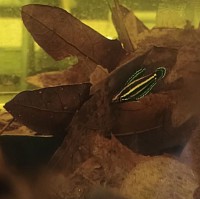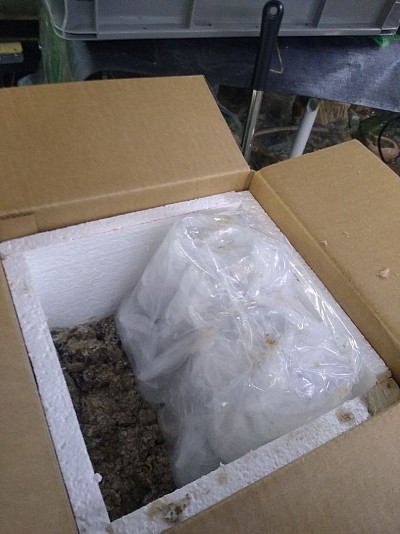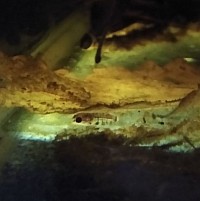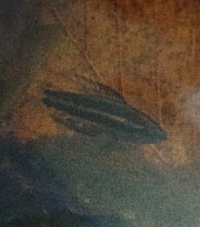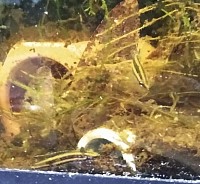Updates from the PGRC: Blog
Five Years In: A New Phase for the PGRC
This December marks the five-year anniversary of the founding of the Parosphromenus Genetic Resource Center (PGRC), and with that milestone comes a moment of reflection—and projection.
When I first began this project in December 2020, the vision was clear, if ambitious: to create a U.S.-based resource that could complement the already vital work being done by the Parosphromenus Project in Europe. While their efforts have secured the genetic security of many Parosphromenus species in Europe, I saw a gap in the availability of location-specific Parosphromenus species for committed conservation hobbyists here in the United States. The PGRC was born to fill that need—to become a bridge between awareness and access, between good intentions and significant conservation participation, in the United States.
Of course, the road has not always been smooth. A power failure during a major snowstorm in 2022 wiped out months of progress, and several precious fish lines. I've yet to figure out how best to secure consistent funding beyond my own personal contributions, and the labor involved in running a one-person operation of this scale is not for the faint of heart. But despite those challenges, the PGRC has managed to ship over 200 carefully tracked animals (from five known collection-locations) to dedicated breeders across the country. And more importantly, I’m starting to see signs of a true network forming—a growing circle of committed individuals stewarding their own lines of species, forming the early framework of what I hope will become a decentralized, resilient insurance population system.
As we approach the next phase of this work, I’m beginning to ask whether the PGRC should now shift its focus from popularization to preservation. For the past five years, my strategy has been deliberately broad: maintain as many species as possible, spread them widely, and encourage interest and participation. That strategy has worked. It was the right start. But it’s not the strategy that will secure the long-term survival of any one species.
So, for the next five years, I plan to narrow the focus.
I envision selecting two or three Parosphromenus species and building a deep, stable, genetically diverse insurance population for each. My target will be to maintain approximately 95% of the genetic diversity of the founder stock over a 25-year horizon. This kind of genetic stewardship will require intensive record-keeping, controlled breeding, and coordination with other serious hobbyists and institutions. It’s the kind of slow, deliberate, data-driven effort that can make the difference between a species enduring or vanishing forever.
I haven’t yet decided which species I’ll commit to for this phase. That decision will require careful thought about availability, wild population status, and what makes the most strategic sense given the global conservation picture. But what I can say is this: the PGRC will remain rooted in its founding mission, even as that mission grows deeper roots.
To those who’ve supported, collaborated, bred, shared, or just watched this effort take shape over the last five years—thank you. The next five are shaping up to be even more focused, more intentional, and, I hope, more impactful.
—
Restoring Hope: How Former Oil Palm Plantations Could Become Future Refuges for Parosphromenus
The Parosphromenus genus stands on the brink of extinction. These fish are among the most sensitive barometers of peat swamp health, and their survival is inseparable from the fate of Southeast Asia’s vanishing blackwater forests.
But there is hope—rooted not in nostalgia, but in pragmatic, science-backed restoration.
The Problem We Face
For decades, oil palm expansion has chewed away at Southeast Asia’s peat swamps, converting intricate ecosystems into monocultures. What’s left is often unrecognizable—chemically treated, hydrologically altered, and biologically impoverished. Some Parosphromenus species now exist in single known localities, many of which are directly threatened by surrounding plantations.
And yet, some of these fish persist—even within the edges of these altered lands.
A Vision for Rewilding
Emerging research shows that degraded oil palm plantations can recover—if we intervene with purpose. Restoration strategies like the “tree island” approach—planting clusters of native trees across abandoned plantations—have proven to:
Attract native wildlife and promote seed dispersal
Reintroduce rare plant species
Improve water quality and structure across the landscape
In just six years, tree islands in parts of Malaysia and Indonesia hosted over 2,700 native woody plant species—enough to start rebuilding functioning ecosystems.
Restoring riparian buffers (vegetated strips along waterways) has also shown promise. These buffers improve hydrology, stabilize water chemistry, and provide the shaded, complex habitats that Parosphromenus require.
Could These Restored Lands Host Parosphromenus Again?
Yes—with time, care, and commitment. Former oil palm lands, if rewetted and re-vegetated properly, can once again host soft, acidic blackwater. They can support the microhabitats, leaf litter, and invertebrate life that Parosphromenus rely on for courtship, feeding, and spawning.
Species like P. kishii have already been found in altered habitats. What if restoration made those habitats viable again—not just barely survivable?
The Role of Captive Conservation
This is where our community comes in.
Insurance populations—those of you breeding, logging, and sharing Parosphromenus responsibly—are not just preserving genetic diversity. You are creating the possibility of reintroduction. The fish in your tanks today might be the ancestors of wild populations restored tomorrow.
Efforts like those led by the Parosphromenus Project and partner institutions matter more than ever.
What We Can Do Now
Support and expand captive programs with meticulous record-keeping and ethical breeding practices.
Document your fish—species, localities, behaviors—because every piece of data we share shapes the future of these fish.
Believe in recovery. These ecosystems, like the fish themselves, are delicate but resilient. Given the right conditions, they can return.
Restoration of oil palm landscapes isn’t fantasy. It’s field-tested, peer-reviewed, and already underway.
And for Parosphromenus, it might be the lifeline they need.
Want to contribute to the future of licorice gouramis? Start by submitting your fish to the Parosphromenus census. Visibility is the first step toward protection.
~Brian
A Quiet Call to Action: Why Your Voice Matters in the Fight to Save Parosphromenus
In a world full of noise, outrage, and division, sometimes the most powerful thing we can do is something quiet. Something small. Something that reflects who we really are and what we deeply care about.
In October 2024, only 44 people worldwide submitted their Parosphromenus records to the Parosphromenus Project’s census.
Just 44.
And yet—look online. Scroll through forums, retailer stock lists, and social media posts. The presence of these fish is clearly greater than the number we see reflected in the census. Which raises the question: What’s missing between the people who care and the action that helps?
If you’re keeping Parosphromenus—if you’re drawn to their subtle beauty, their fascinating behaviors, their fragility and mystery—then you’re already part of something extraordinary. You’re a caretaker of a lineage that stretches back through shadowy peat swamps and quiet forest streams. But here’s the truth: passion without participation cannot preserve.
The Parosphromenus Project’s twice-annual census is one of the most effective, low-effort tools we have to protect these fish from extinction. It doesn’t require money. It doesn’t require hours of time. It requires presence. A moment of pause to say, “Yes, I’m here. These fish are here. They matter.”
We know life gets busy. We know some may hesitate to register because they’re unsure about species ID, tank conditions, or even just whether they “count.” Let’s speak clearly: If you keep these fish, you count. Every entry helps shape a more accurate picture of the global population in captivity. That picture influences breeding priorities, conservation strategies, and outreach efforts.
This isn’t about control or gatekeeping—it’s about community. It’s about connection. It’s about aligning our care with our contribution.
The truth is that Parosphromenus are not safe. Not in the wild, and not in captivity. But they can be. That future is still possible—but only if those who love them show up for them in simple, consistent ways.
So consider this your quiet invitation:
If you love these fish—let us know they’re with you. Add your name to the census. Help us help them stay in the world, not just in memory.
You don’t have to change everything. Just choose this small act of hope.
The Spring census is on through April 2025, we’d love to have your fish take part.
We’re listening.
~Brian
Busy Summer
I am influenced by the changing seasons, as my location in the Northeast US experiences all four distinct seasons. At times, the transitions between seasons can be subtle, while in other years, the arrival of a new season can be quite abrupt. Similarly, my personal and professional life also undergoes seasonal changes.
This connection to seasonal patterns aligns well with my passion for the Parosphromenus species, which are also highly seasonal.
At the start of this summer, I was nearing the completion of a 27-tank breeding rack, marking the fourth multi-tank recirculating system for Parosphromenus in my facility. However, due to a recent personnel shift at my day job, my responsibilities became more demanding, limiting the time I could dedicate to the Parosphromenus Center.
As we transition into the cooler nights of autumn and notice the occasional orange leaves outside, I too am experiencing a shift in the busy season of my life.
Despite not meeting all of my goals this summer, I believe I have made significant progress and have much to look forward to:
- I successfully shipped 50 fish to six new Parosphromenus keepers, helping to ensure the future of three species.
- The Parosphromenus Project's spring census results were released, and I was pleased to see several new reports from US keepers.
- My outdoor mosquito cultures have thrived, maintaining the broodstock in excellent condition for breeding.
- We successfully bred a new species, and I have confirmed at least two separate spawns of our recently acquired P. juelinae.
- The pairs of location-verified P. phoenicurus that arrived earlier this spring have begun breeding, and I now have several spawns from them growing.
Additionally, I was invited by the Boston Aquarium Society to speak at their meeting in September. I am eager to share insights on our critical conservation goals, which are driven by passionate hobbyists like you.
As the seasons change, I look forward to what lies ahead.
Quick thoughts on the ethics of keeping Parosphromenus in captivity:
It can be confusing to understand how taking a species out of its wild habitat could ever be imagined to be a desirable conservation action, but the situation with Parosphromenus is something of a special case. Many of the Parosphromenus species have extremely limited home ranges (eg. P. phoenicurus is known from only one small swamp in Sumatra), and these habitats have been subject to some of the most rapid and devastating habitat alteration efforts in human history! The lowland rainforests of southeast Asia are (unfortunately for the natives species that lived there) ideal for growing oil palms, and with the ever increasing human demand for cheap vegetable oils, vast swaths of once virgin, ancient rainforest have been cleared, and their associated peat swamp habitats drained, to make way for plantations of oil palms.
This means that, despite the high fecundity of fish like Parosphromenus, their wild habitats are disappearing, which has left many of the 23 described species (and an unknown number of yet-to-be-described species) on the brink of extinction. While over-collection is a well documented risk to many endangered species, this is less of a concern with Parosphromenus, due to their high abundance, and quick breeding, in areas that can still sustain them.
With that as background, one can better understand why maintaining a captive insurance population of these species is, on the one hand not particularly threatening to the animals still in the wild, and at the same time critical to ensuring the survival of species whose entire home ranges can, and often are, converted to farmland virtually overnight!
A New Best Practices Guide for Parosphromenus
We are pleased to announce that the Parosphromenus Project, in partnership with Chester Zoo, has developed a comprehensive best practice guide for the care of Parosphromenus.
The guide, which can be accessed here: https://www.facebook.com/share/p/Xf6bgxi4PBhvmK26/?mibextid=oFDknk, offers valuable and practical information on the proper care and breeding of Parosphromenus.
We highly recommend that anyone seeking guidance on the care and breeding of Parosphromenus refer to this informative resource!
Parosphromenus juelinae, etc.
A big thanks to Blackwater Aquatics for sending me 10 gorgeous young P. juelinae!
These youngsters are acclimating well, and will hopefully be in breeding form within a few months.
I didn't get a chance to get pictures of them yet, but will update with picks as soon as I get some, and I'll post when I get offspring!
In other news, I have another 10 fish on the way from Borneo, thanks to fishbuff.com, who will be sending me some great looking P. quindicem in a few weeks.
Exciting times here at the PGRC.
Introducing the Parosphromenus Finder app!
In order to further our goal of expanding the Parosphromenus conservation hobby within the USA, in conjunction with the Parosphromenus Project's mission, we've created Parosphromenus Finder!
This free app will give Parosphromenus breeders in the US a forum for listing their available fish for adoption, sale, or trade.
Please check the link below, and let me know what you think!
Quindicem!
I'm pleased to announce that I've had a successful quindicem spawn!
Like most of the previous spawns here, I noticed it when I saw a baby fish swimming around at feeding time.
I can't tell how many fry hatched out, since I've only seen one fry at a time so far, and of course none of them wanted to get their picture taken, but I'll keep trying.
At the suggestion of a fellow paro hobbyist, I recorded my water quality parameters and will post them here:
- pH: 4.9
- Conductivity: 135 μS/cm
- Temp: 21.5c
My plan for this species, as with all the species I'm breeding, is to establish 5 breeding pairs, before making offspring available for adoption, so it'll still be a while before I can offer this species, but it's a start!
P. filamentosus added to the breeding project!
Thank you to Blackwater Aquatics, who sent a beautiful group of 10 unsexed filamentosus youngsters (collected near palangkaraya, Borneo), which will become the basis of a breeding group which will hopefully provide captive born filamentosus to US hobbyists!
First P. opallios offspring!
During last week's water change day, I noticed baby opallios in 3 of my 5 opallios pair tanks! This marks the first time I've bred this species since starting to work with them.
Fish available for adoption now!
I'm pleased to announce that we now have fish available for adoption!
In the blocks below I'll list the species, and numbers, of fish I have available. My preference is to send out breeding pairs, but right now all the available fish are juvenile, so adoptions would be of unsexed fish.
If you're interested in any fish listed, please visit the "join the effort" page, and contact me via the chat feature.
If you choose to adopt fish from us, you will be responsible for shipping costs (I use shipyouraquatics.com as the shipper), but there is no cost associated with the fish directly.
Borneo import arrived!
I'm happy to report that all 40 fish I ordered from fishbuff.com arrived safe and healthy!!
A big shout-out to my transhipper Joel Fernandez who did an amazing job getting my fish to me in such good condition.
I got five pairs each of P. linkei, and opallios (collected from the Arut River canals in East Kotawaringin regency, Pangkalanbun City - Central Kalimantan/ Borneo), five pairs of P. phoenicurus (collected near Kota Kerincikiri, Sumatra), and five pairs of an unidentified "bintan complex" species (collected in Jambi, Sumatra).
These fish will join the P. quindicem, and P. cf. linkei "palankayra" that I'm also working with, to become the backbone of the conservation and distribution efforts that I've been working toward.
I look forward to breeding these fish, and having offspring available to distribute soon!
~Brian
